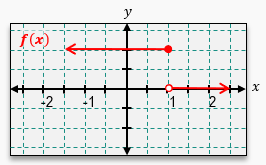Which of the following equations represents the orthogonal trajectories of the family of curves given by ?
Table of contents
- 0. Functions7h 54m
- Introduction to Functions16m
- Piecewise Functions10m
- Properties of Functions9m
- Common Functions1h 8m
- Transformations5m
- Combining Functions27m
- Exponent rules32m
- Exponential Functions28m
- Logarithmic Functions24m
- Properties of Logarithms36m
- Exponential & Logarithmic Equations35m
- Introduction to Trigonometric Functions38m
- Graphs of Trigonometric Functions44m
- Trigonometric Identities47m
- Inverse Trigonometric Functions48m
- 1. Limits and Continuity2h 2m
- 2. Intro to Derivatives1h 33m
- 3. Techniques of Differentiation3h 18m
- 4. Applications of Derivatives2h 38m
- 5. Graphical Applications of Derivatives6h 2m
- 6. Derivatives of Inverse, Exponential, & Logarithmic Functions2h 37m
- 7. Antiderivatives & Indefinite Integrals1h 26m
- 8. Definite Integrals4h 44m
- 9. Graphical Applications of Integrals2h 27m
- 10. Physics Applications of Integrals 3h 16m
- 11. Integrals of Inverse, Exponential, & Logarithmic Functions2h 34m
- 12. Techniques of Integration7h 41m
- 13. Intro to Differential Equations2h 55m
- 14. Sequences & Series5h 36m
- 15. Power Series2h 19m
- 16. Parametric Equations & Polar Coordinates7h 58m
2. Intro to Derivatives
Differentiability
Struggling with Calculus?
Join thousands of students who trust us to help them ace their exams!Watch the first videoMultiple Choice
Determine if the graph of the function f(x)is continuous and/or differentiable at x=1.

A
Continuous and non-differentiable
B
Continuous and differentiable
C
Discontinuous and non-differentiable
D
Discontinuous and differentiable
 Verified step by step guidance
Verified step by step guidance1
Examine the graph of the function f(x) at x=1. Notice that there is a jump discontinuity at this point, as the left-hand limit and the right-hand limit do not match.
To determine continuity at x=1, check if the left-hand limit, right-hand limit, and the value of the function at x=1 are equal. In this case, they are not, indicating the function is discontinuous at x=1.
For differentiability, a function must be continuous at the point in question. Since f(x) is not continuous at x=1, it cannot be differentiable there.
Additionally, even if the function were continuous, the presence of a sharp corner or cusp at x=1 would also prevent differentiability.
Conclude that the function f(x) is both discontinuous and non-differentiable at x=1.

 5:02m
5:02mWatch next
Master Determining Differentiability Graphically with a bite sized video explanation from Patrick
Start learningRelated Videos
Related Practice
Multiple Choice
66
views
Differentiability practice set


